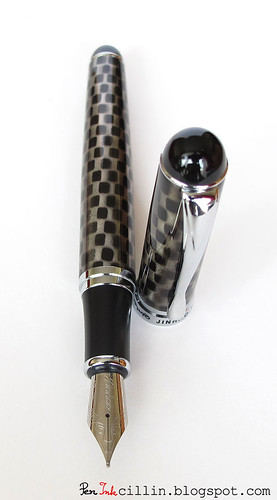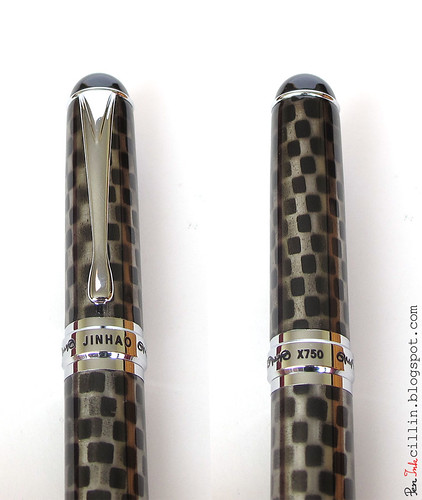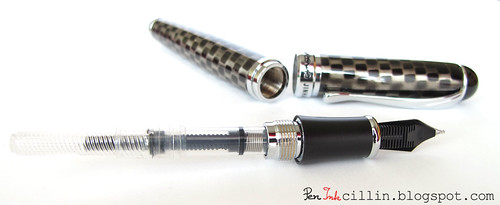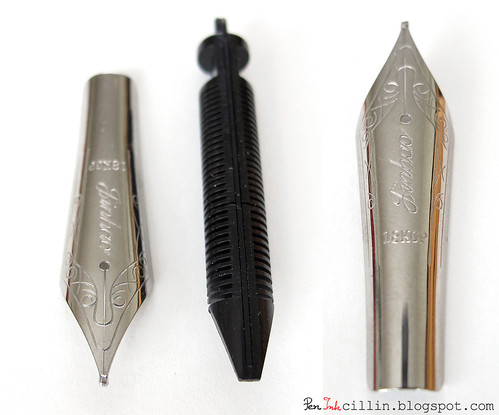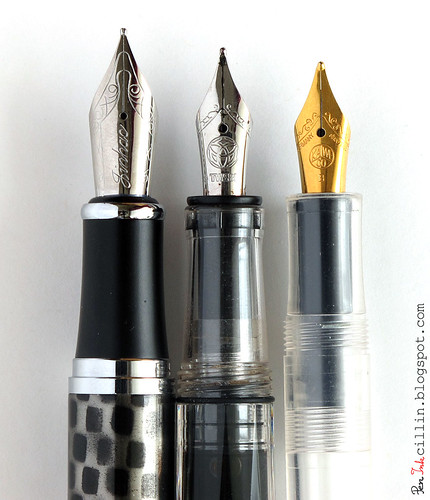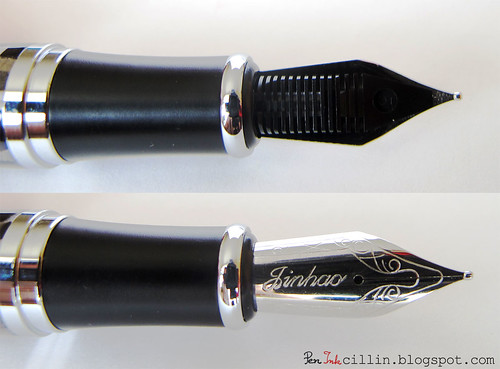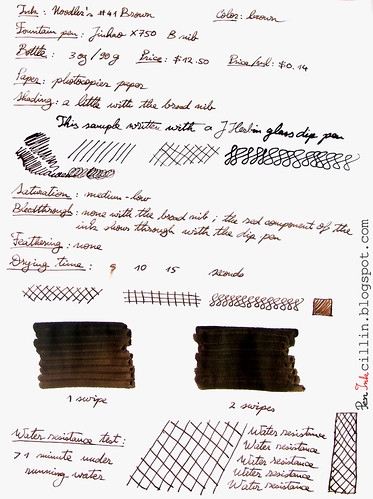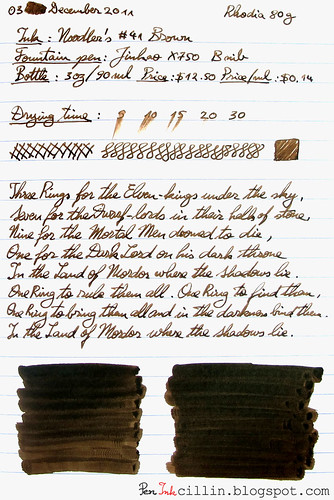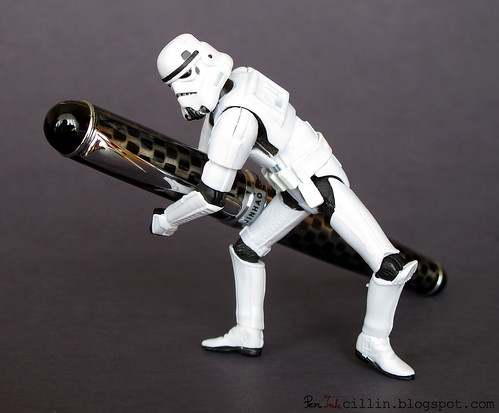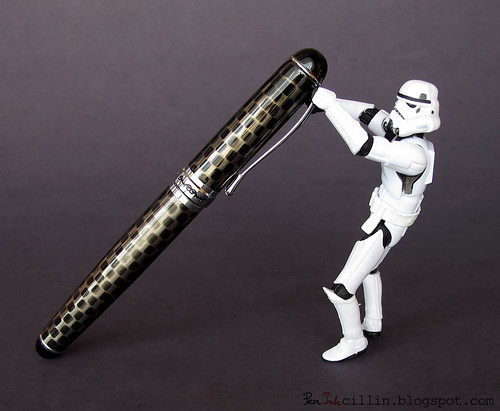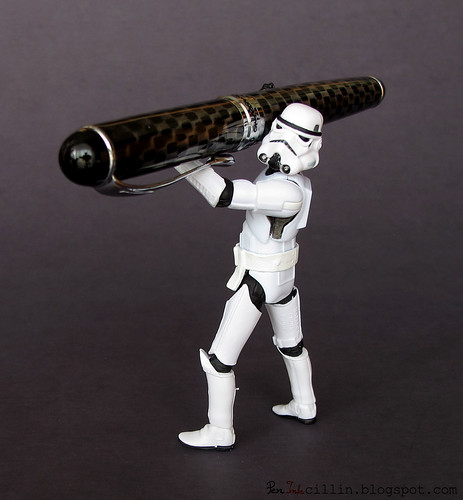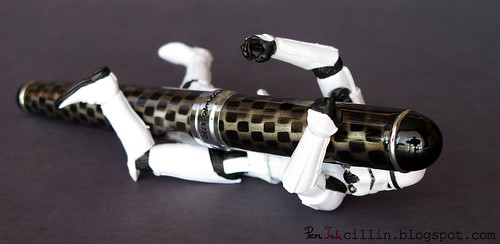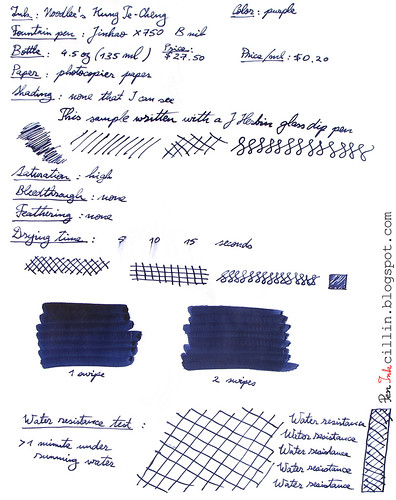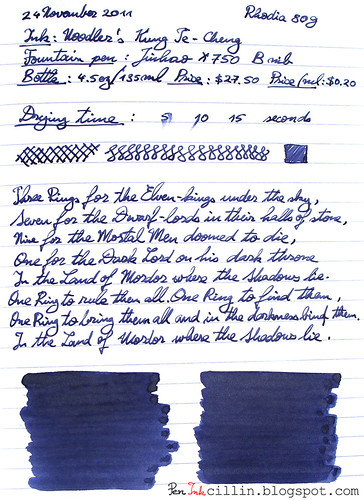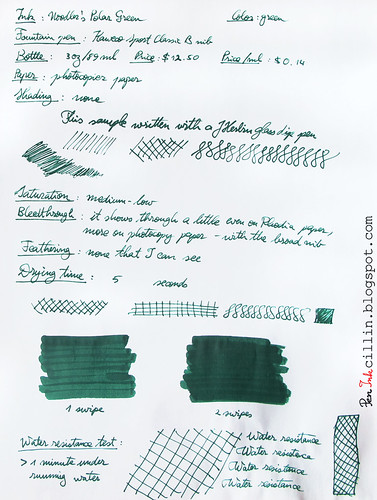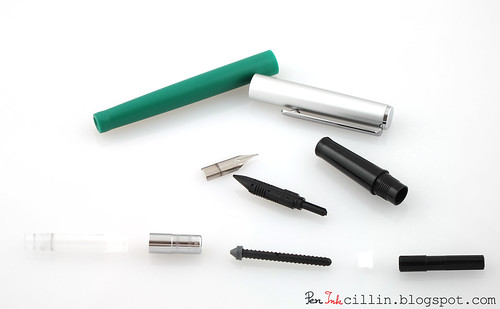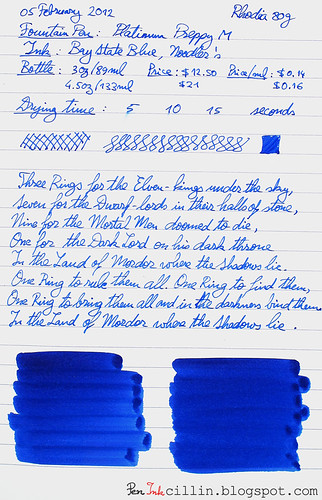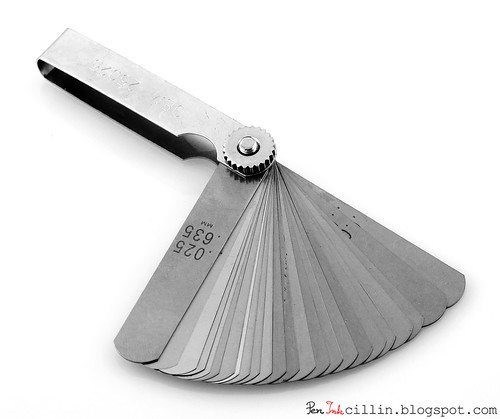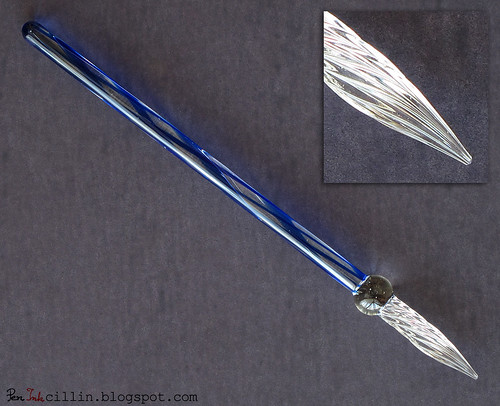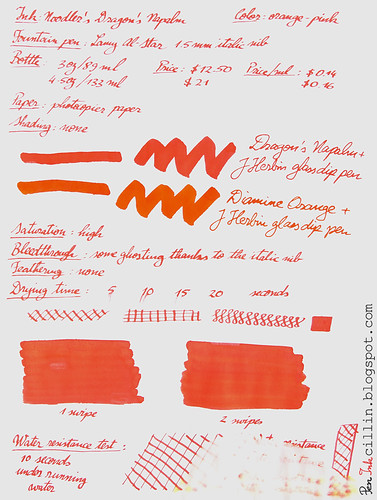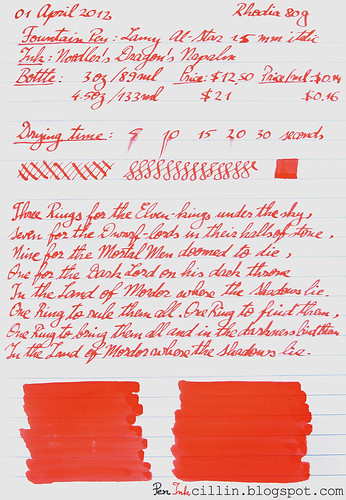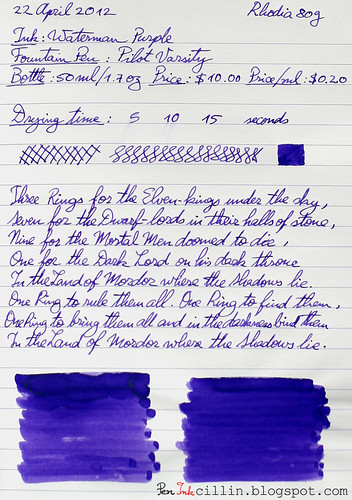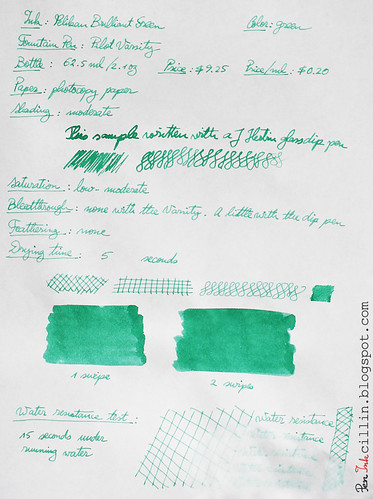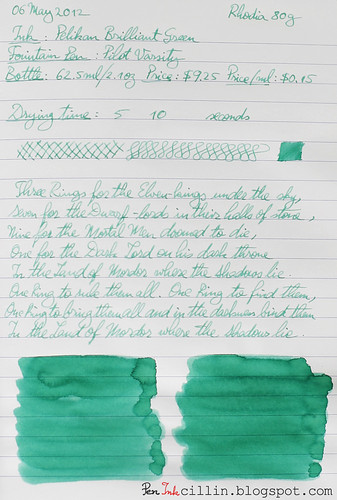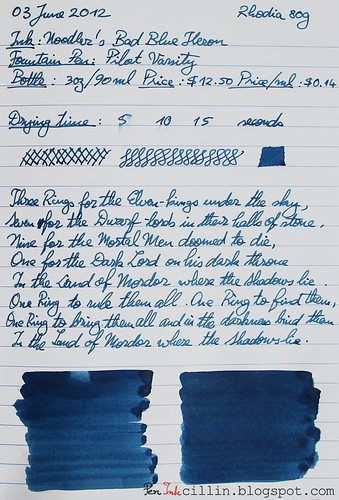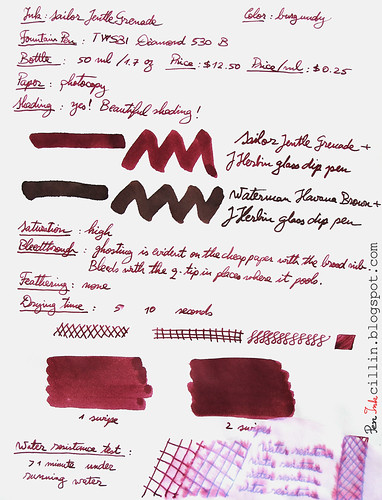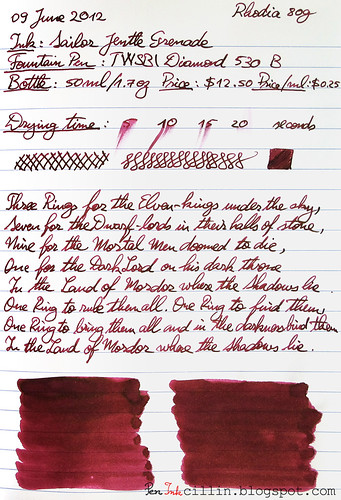Happy New Year everyone! To continue where I left off last year, I'm going to do a quick review of another yellow highlighter ink, namely Noodler's Year of the Golden Pig. Why a quick review? Because this ink is incredibly similar in appearance to my previously tested highlighter ink, Noodler's Firefly Yellow, I will only mention the differences between the two. For appearance and general behavior such as drying time, bleedthrough, feathering, please refer to my review of Noodler's Firefly. I tested both inks in my trusty Pilot Parallel 6.0mm which works really well in the role of highlighter marker.
I already said that there's virtually no difference between these two inks, at least as far as I can see. If I squint and concentrate really hard, I do believe that Year of the Golden Pig is slightly more intense. I suspect that this is due to the second of the differences listed below (opacity).
Bottle
Noodler's Year of the Golden Pig is more expensive than Firefly and it only comes in the large 4.5oz (133ml) bottles which cost $24 or $0.18 per milliliter.
Opacity
While Noodler's Firefly is clear, Year of the Golden Pig appears milky. As a result, the latter behaves more like a pigment-based ink while Firefly feels dye-based. I'm not sure if that's actually the case but this is how these two inks feel to me.
As a result of this milkiness, Year of the Golden Pig has the potentially annoying habit to dry up in a thick crust inside the pen you are using. Such was the case with my Pilot Parallel. I haven't managed to completely clean up the muck after washing it throughly with water. I will keep trying. If you are using this ink in a proper felt-tip highlighter marker, obviously this won't be a problem, and this cautionary tale is valid only if you use something like the Pilot Parallel.
Water resistance
Although I haven't tested the two inks fir water resistance (because I deviated from my standard way of testing inks), the biggest distinction between them, and perhaps the only one that should matter to anyone, is that Year of the Golden Pig is waterproof, while Firefly is not. If you need a waterproof highlighter marker, then I believe you don't have another choice.
Flow
It seems to me that Firefly flows a little better than Golden Pig. This fact plus the water resistance might give credence to my pigment theory.
Conclusion
If one had to make a choice between these two inks, it wouldn't be too hard. The biggest question is whether you need water resistance or not. If not, then it's Noodler's Firefly all the way. Not only is this ink less fussy (it cleans easier and flows better) but it can be bought in a smaller bottle and is less expensive. You can also use it in either a marker or something like the Pilot Parallel without fear.
On the other hand, if water resistance is high on your list of priorities, Noodler's Year of the Golden Pig is the obvious choice, provided you only use it in a marker, or a dedicated Pilot Parallel. Also, in a fountain pen, daily use is indicated, otherwise the ink stagnates and might clog up the pen eventually.
There is one other yellow highlighter ink that I would like to test but I could kick myself for not buying a sample when I had the chance. It simply slipped my mind. That ink is Pelikan's M205 Duo. I am curious to put these three inks next to each other but it won't happen very soon I'm afraid. Until then, you can still chose between these two Noodler's inks which, combined, should serve most needs.
Here's a sample of Noodler's Year of the Golden Pig tested on Rhodia 80g paper, also compared with a classic Sharpie marker. The photo doesn't do full justice to this ink, believe me. The ink is much more vibrant and eye-searing in real life. Notice that the Sharpie looks a little bit dull in comparison.
I already said that there's virtually no difference between these two inks, at least as far as I can see. If I squint and concentrate really hard, I do believe that Year of the Golden Pig is slightly more intense. I suspect that this is due to the second of the differences listed below (opacity).
Bottle
Noodler's Year of the Golden Pig is more expensive than Firefly and it only comes in the large 4.5oz (133ml) bottles which cost $24 or $0.18 per milliliter.
Opacity
While Noodler's Firefly is clear, Year of the Golden Pig appears milky. As a result, the latter behaves more like a pigment-based ink while Firefly feels dye-based. I'm not sure if that's actually the case but this is how these two inks feel to me.
As a result of this milkiness, Year of the Golden Pig has the potentially annoying habit to dry up in a thick crust inside the pen you are using. Such was the case with my Pilot Parallel. I haven't managed to completely clean up the muck after washing it throughly with water. I will keep trying. If you are using this ink in a proper felt-tip highlighter marker, obviously this won't be a problem, and this cautionary tale is valid only if you use something like the Pilot Parallel.
Water resistance
Although I haven't tested the two inks fir water resistance (because I deviated from my standard way of testing inks), the biggest distinction between them, and perhaps the only one that should matter to anyone, is that Year of the Golden Pig is waterproof, while Firefly is not. If you need a waterproof highlighter marker, then I believe you don't have another choice.
Flow
It seems to me that Firefly flows a little better than Golden Pig. This fact plus the water resistance might give credence to my pigment theory.
Conclusion
If one had to make a choice between these two inks, it wouldn't be too hard. The biggest question is whether you need water resistance or not. If not, then it's Noodler's Firefly all the way. Not only is this ink less fussy (it cleans easier and flows better) but it can be bought in a smaller bottle and is less expensive. You can also use it in either a marker or something like the Pilot Parallel without fear.
On the other hand, if water resistance is high on your list of priorities, Noodler's Year of the Golden Pig is the obvious choice, provided you only use it in a marker, or a dedicated Pilot Parallel. Also, in a fountain pen, daily use is indicated, otherwise the ink stagnates and might clog up the pen eventually.
There is one other yellow highlighter ink that I would like to test but I could kick myself for not buying a sample when I had the chance. It simply slipped my mind. That ink is Pelikan's M205 Duo. I am curious to put these three inks next to each other but it won't happen very soon I'm afraid. Until then, you can still chose between these two Noodler's inks which, combined, should serve most needs.
Here's a sample of Noodler's Year of the Golden Pig tested on Rhodia 80g paper, also compared with a classic Sharpie marker. The photo doesn't do full justice to this ink, believe me. The ink is much more vibrant and eye-searing in real life. Notice that the Sharpie looks a little bit dull in comparison.





